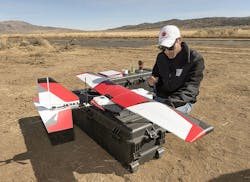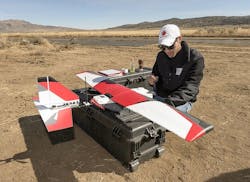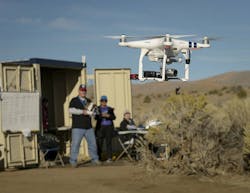OXIS and NASA collaborate on lightweight energy cell technology for aircraft, spacecraft
OXFORD, England. Engineers at OXIS Energy in Oxford, England, and NASA in Pasadena, Calif., are applying their expertise for applications where weight is crucial – for example, unmanned aircraft systems (UAS) or drones, balloons, high-altitude aircraft, and defense for terrestrial needs and planetary missions – to develop specific energy lithium sulfur cells.
Both companies stand to benefit from the collaboration: It will help NASA to improve its understanding of the capabilities of lithium sulfur technology and OXIS to develop pouch cells meeting NASA's long-term battery requirements.
OXIS will supply its latest-generation Ultra Light cells to NASA JPL Laboratory for evaluation in its facility in Pasadena, California. NASA will evaluate the cells under different conditions to assess energy density, low temperature performance, cycle life, self-discharge, and calendar life. NASA and OXIS technical teams will work closely together to assess the performance of OXIS cells.
“We know from our collaboration with European and Chinese space agencies that for every kilogram (1kg) of battery weight saved, it equates with a launch cost saving of in excess of U.S. $20,000,” says Huw Hampson Jones, CEO of OXIS. “When lithium-ion batteries are weighing in at several hundred kilos, the savings of deploying OXIS Lithium-Sulfur would amount to several million dollars for the space agencies. The benefit of NASA evaluating OXIS Lithium Sulfur cell technology is extremely important in providing empirical data as to where else in aviation and defense this technology may be applied."
The NASA/OXIS test results will be the joint property of both companies and will not be shared with anyone else nor presented at conferences without the approval of OXIS.
Since 2004, OXIS Energy has been involved in the design, development, and now the move toward commercial production of Polymer Lithium Sulfur cells for battery systems. With 35 patent families, OXIS has been granted 101 patents with 103 pending. The chemistry and technology is environmentally friendly. OXIS has demonstrable empirical data justifying its claim on the inherent safety of its battery technology.
Search the Aerospace & Defense Buyer's Guide
The go-to resource for Intelligent Aerospace technology news & information:
Covering key topics
Across all market segments
Subscribe to the free Intelligent Inbox e-newsletter
Subscribe to receive all the latest aerospace technology news & information, delivered directly to your e-mail inbox twice a week (Tuesdays and Thursdays). Sign upfor your free subscription to the Intelligent Inbox e-newsletter at http://www.intelligent-aerospace.com/subscribe.html.
Connect on social media
Keep pace with aerospace innovation and opportunities via your favorite social media channels. Connect with Intelligent Aerospace on Twitter (@IntelligentAero), LinkedIn,Google+, and Instagram.



